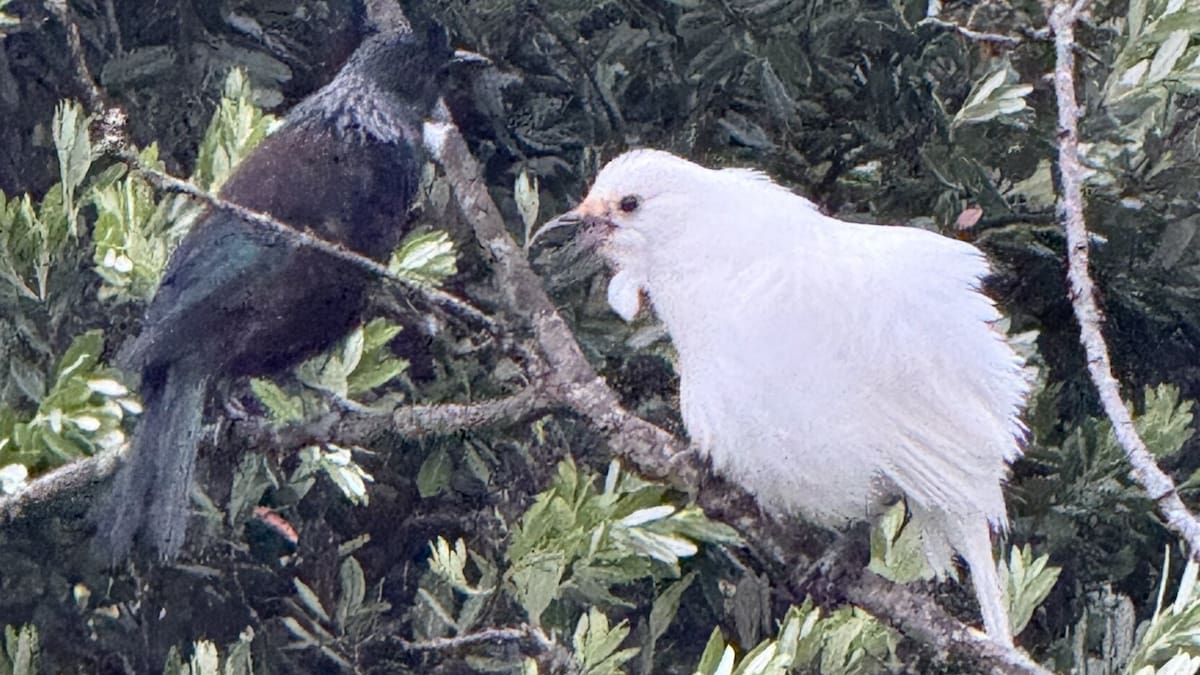“I saw it one day flying around and in our avocado tree. Then it started becoming a daily thing. It would come to our house, in our trees.
“We definitely had to have a close-up double-take, but as soon we saw the tufts of feathers, we knew [it was a tūī] and the beak also was a giveaway.”
Pye said he tried to get some decent photos of the bird, but anytime he got close, it would “gap it”.
“I got up for the rugby the other morning and looked out the window after the game, and it was in the kōwhai tree.
“I quickly shot out and got some photos, and throughout the day got a couple more.”
Pye said it was an amazing sight.
This rarely-sighted white tūī, and friend, have been frequent visitors to Nathan Pye’s Bay of Plenty garden recently. Photo / Nathan Pye
“It’s really cool seeing it. It’s so white and so different than the other birds flying around.”
He said the white tūī had also made a mate in the neighbourhood – a more common blue, black and green tūī.
“They fly around together.”
Pye said someone in the area had commented on social media that a white tūī had been seen around their property a couple of years ago.
“It definitely doesn’t look like a young bird.”
Pye said he felt lucky to see the rare bird.
“We get kerurū and weka, all of them around here. There’s a reason our kōwhai tree has no leaves on it.”
The rarely-sighted white tūī’s colour is likely the result of genetic mutation and it does not have the pink eyes of an albino, Dr Colin Miskelly of Te Papa says. Photo / Nathan Pye
Te Papa curator of vertebrates Dr Colin Miskelly said white tūī likely arose through genetic mutation.
He said this particular white tūī was leucistic, which referred to the look of the bird without identifying how it came to be white.
“Most white tūī are not albinos,” Miskelly said.
“They do not have pink eyes, and typically have slightly grey or brown feathers, rather than the pure white of an albino.”
He said it was likely that most leucistic birds had a heritable genetic condition, but it may be caused by non-heritable environmental effects, including ontogenetic (occurring during development), diet-related or an interaction of genetics, ontogeny and environment.
Miskelly said he heard of two or three white tūī sightings a year.

